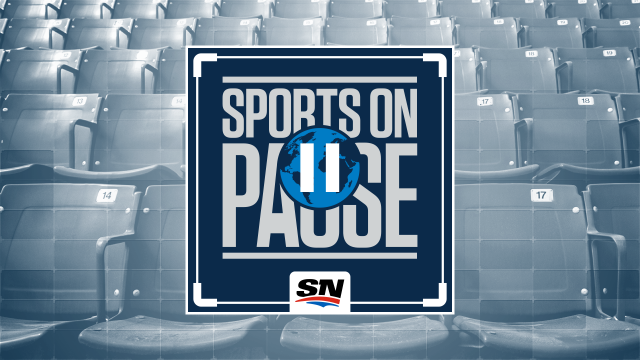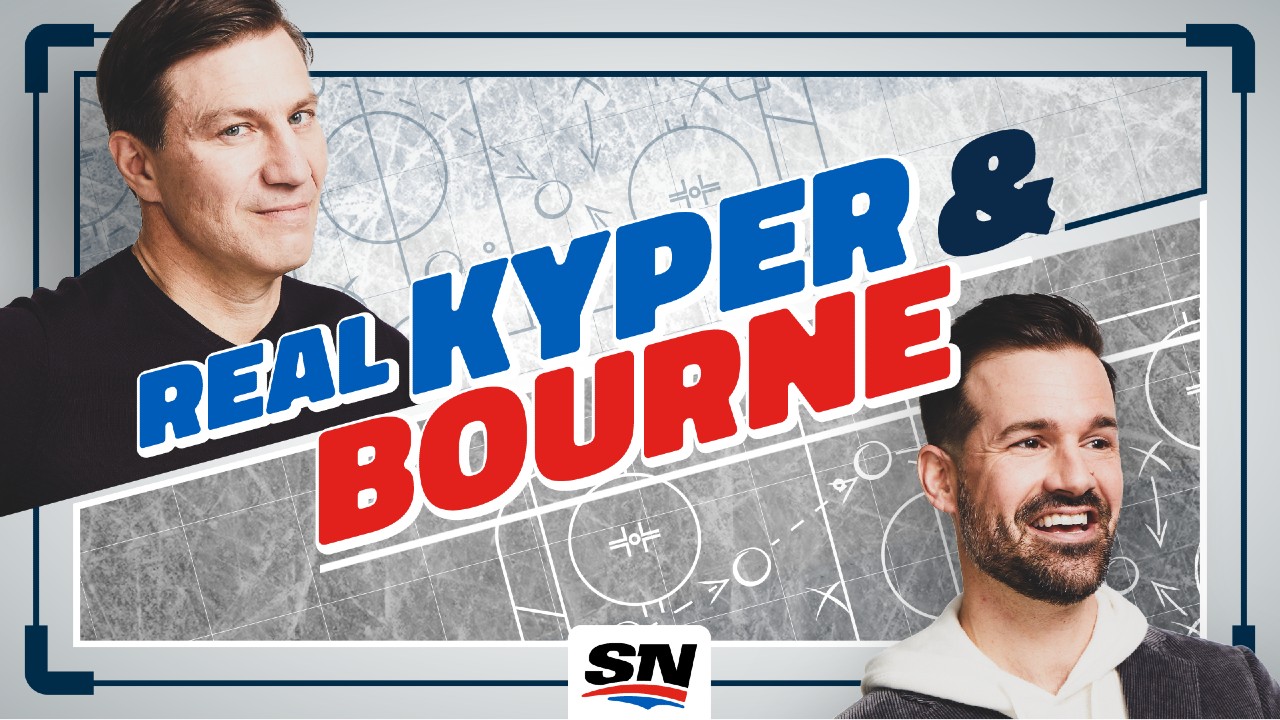
When Randy Ambrosie on Wednesday told a town hall of season ticket holders nationwide that there could be some semblance of a 2020 season beginning in September, he did so with the assurance from his trusted medical experts that there exists a scenario in which football could be played because of the development of health protocols tailormade for the CFL.
Whether it’s feasible economically and logistically? Those are altogether different issues.
Ambrosie went public this week with word that the 2020 Grey Cup in Regina is toast and that in a best-case scenario half-a-season could be salvaged. But he did not reveal the multi-dimensional plan devised with the hope of keeping players and staff safe should teams reconvene this summer for training camp and a potential start of play around Labour Day.
For weeks, the commissioner has said he is not giving up on the CFL playing this year. He approached ownership of the Ottawa RedBlacks and their medical director, Dr. Glenn Copeland. The mission was clear: let’s get a proposal to return to the field and have a new process of getting games started.
That model would be based on no fans being in the stadium for Week 1 of a modified schedule.
A committee was struck. Members included Ambrosie, Dr. Copeland, a number of team and infectious disease doctors, immunologists, some league governors and general managers as well as past and present CFL trainers. Perhaps the most impressive and accomplished member of the group is Dr. Lawrence Steinman, a professor at Stanford University and former immunology department chair, who like Dr. Anthony Fauci is a member of the National Academy of Sciences and National Academy of Medicine.
The commissioner repeated the same message to them over and over: safety, before anything else, for players and staff. If we can get there, Ambrosie reasoned, then we’ll see if there is a business case to make games happen.
[radioclip id=4908167]The committee’s game plan was to first look at a minimum number of venues to stage practices and games. The decision was made to go to the areas in the country with the fewest reported cases of COVID-19. That took them to the Prairies. The curve has all but flattened in Manitoba and Saskatchewan, the numbers of people with the virus there are minute in comparison to Ontario and Quebec.
“What we were saying is, ‘let’s find one or two venues, keep everyone there and keep the venues close enough and play back and forth,’” explained Dr. Copeland, who also works with the Toronto Blue Jays.
Regina and Winnipeg were identified as the two cities as hubs. Five teams would congregate in one market, four in the other.
To the committee, those two cities made the most sense. Fewer cases make them as safe of an environment as anywhere else that plays professional football in Canada, there are a number of practice fields in each city and new stadiums make them TV-ready. Any travel would be done by bus, a six-hour trip each way, to keep the chance of infections down and reduce costs.
With that as the backdrop of the committee’s framework, next came the most important factor on the medical side of the entire plan: testing.
Since the pandemic hit in March, testing has been perhaps the most polarizing issue of the entire crisis. From the number of tests that would be available to the public to the accuracy of what they revealed. Over the past 10 weeks, considerable progress has been made with it across North America. Not only is there the conventional nasal swab, but there is now a blood test and also a process that could detect off of saliva. What got the CFL committee’s interest spiked was Dr. Steinman’s suggestion of a particular antibody test that is FDA-registered and takes only 15 minutes to provide a result.
The belief among some of the medical professionals around the (virtual) table — most of the conversations with this group have been Zoom calls — is that antibody method may be the league’s best choice to go with, although no decision would be made. Regardless of the method, or methods, chosen, the committee felt comfortable that at this stage of the crisis there is now enough testing available to check on players and staff daily.
What would be the procedure and protocol for it?
The premise is not complex, but thorough. Consider the whole situation in three zones. The outside zone being the regular public domain and the middle zone would be a cordoned off area on stadium grounds where testing would be done. Then the inner zone: where locker rooms, meeting rooms, workout facilities, the field, showers and treatment tables would be.
Effectively, any player or staff member who would arrive at either Regina or Winnipeg facility for work would be stopped at the middle zone. The agreed-upon testing would take place there and the result would be provided while they wait — being given a go or no go. ‘Go’ means the player has tested COVID-19-free, and they head into the inner zone. If a player or staff member is a ‘no go’, it means a positive test. They would be immediately banned from the building and placed in quarantine for 14 days – not dissimilar from how the Bundesliga in Germany handled its positive cases in the lead-up to its return to play last weekend.
[radioclip id=4908333]The CFL’s committee made it clear: nobody could get in the inner zone until they’ve gone through the testing procedure and protocols.
How different would it be in the inner zone? The committee recommended the usually busy weight rooms to be limited to 2-3 players at a time, accompanied by a staff member wearing a mask, who would wipe down machines whenever a player had finished with it. Cleaning would be a major emphasis throughout the inner zone, keeping the areas sanitized. Another expense.
“Once in the inner zone, the assumption is the player is COVID-free until they go to the outside world,” said Dr. Copeland.
All team personnel would be reminded and encouraged to continue social distancing, washing of hands and eating in designated areas when in the outside zone.
“Nothing is official because nobody has made anything official yet,” said Dr. Copeland.
There are three key reasons, presumably, why that hasn’t happened: finances, logistics and an agreement with the players.
Making the two-hub format work has so many hurdles to overcome and money is at the centre of it. Multiple league sources tell Sportsnet that they have been told it is not viable economically to pull it off. To lodge, feed and move four organizations into a city, and three into another, has a massive expense that no team has budgeted for — let alone with every organization in the league having little-to-no revenue since late November.
A further wrinkle is the issue of what happens when personnel enter Canada.
With at least half of each team’s roster being comprised of Americans and the mandated spots for ‘Global’ players, each of those athletes coming into the country would have to spend 14 days in quarantine. So too would coaches and assistant coaches. Edmonton head coach Scott Milanovich, for instance, is still with his family in Florida, and at least one other team has all but two coaches still in the U.S.
After crossing the border, each of them would need their own room and meals for the two weeks. Public health officials contacted by Sportsnet forecasted that the federal quarantine policy won’t change by summer, but because it’s a changing dynamic there is no way of definitively knowing.
If the CFL hopes to begin playing a truncated 2020 season in early September, it would mean a shortened training camp — with the likelihood of one pre-season game, not two — beginning around Aug. 10. That would require incoming flights to Canada by late July.
The concern from team sources was about the health of the players coming out of quarantine that has nothing to do with COVID-19.
“After a guy has been laying around a hotel room for two weeks, are we asking them to go right to the field for practice after a few days? They’re not car engines,” said a source. “You can’t just sit them in the garage and then tell them to light it up.”
Training staffs are worried that groin and hamstring issues will be prevalent for the athletes. Losing skilled players to those injuries early gets magnified if the season may only be eight or nine games.
The desire to get games in centres on finances. Blue Bombers CEO Wade Miller has gone on record in the Winnipeg media saying the team would likely have a $10 million deficit in 2020 should they not play, a year after their Grey Cup-winning season provided the club an announced profit of $3.5 million.
The thought is that generating some money from the CFL’s television contract, with the hope that perhaps crowds of up to 5,000 could eventually come to stadiums in a social distancing manner — with fans wearing masks and sitting three seats apart — by late fall to add revenue could be a possibility.
“How much can we not lose? That’s the mode we’re in,” said a source with a team in the league’s West Division.
Should the CFL try and make this work, training camp rosters will likely be slashed from the 85 players (plus draft picks and globals) that regularly compete for jobs. And time is of the essence. In an interview Thursday morning on Sportsnet 590 The Fan, Ambrosie would not offer a drop-dead date of when the league has to decide whether or not they can play this fall.
Many who work for teams across the country believe there has to be momentum by mid-June and a decision by early July.
“The whole conversation changes July 1 if we can’t move forward,” said a league source. “Then we’re in trouble.”
Flights, hotels, meals, work permits — and if the two-hub format actually is in play, approvals from each city — are required. So, too, is a sign-off from the CFL Players Association that has been in contact with both the federal government and the league office over the past two weeks.
As for the medical committee, that believes returning to play relatively safely is quite possible should its recommendations and protocols be followed amidst the virus, they look at what’s happening with soccer re-starting in Europe and baseball playing in South Korea as signs that Canadian football can be next.
“I’m very cautiously optimistic from a medical standpoint that the CFL can do this,” said Dr. Copeland.
Can the league say the same economically and roll it out logistically? Those answers are paramount in determining the CFL’s fate on playing a shortened 2020 season.
Said a league source: “Every answer has 10 questions. I’m not being negative, it’s just the reality.”





